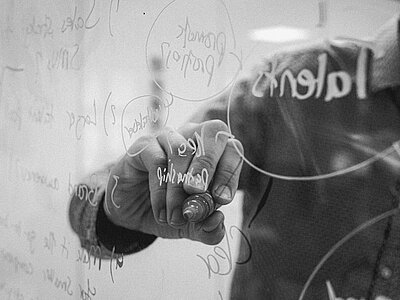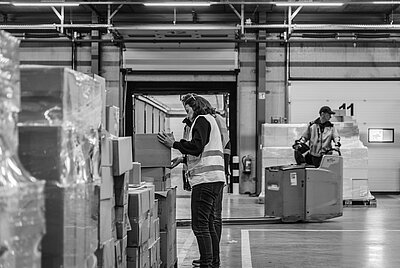Curate your experiences carefully
We’ve spoken at-length about in-store experience driving consumer relationships with retailers. In fact, Shopify ranks it as the number one aspect to focus on when trying to
influence your customer’s psychology.
And this may prove challenging for many retailers right now that are looking to achieve maximum return for their investment when budgets are tough. But the evidence shows that money spent crafting curated experiences pays off.
McKinsey & Company’s Adapting to the next normal in retail: The customer experience imperative, suggests that retailers focussed on shopper experiences achieve three times the shareholder returns.
Curating your in-store experiences can mean anything from collecting rich data or re-thinking your in-store design and layout, to offering in-store appointments that are bookable online, in advance.
What’s important, is that you tie your in-store experience to what your customers are looking for and the behaviours that are driving their decision-making.
Embody shopper motivations
There has been a big shift in the motivations of consumers in recent years. And these are often at odds with retailers’ initial understanding of how business is done.
What does striking a balance look like when you understand a customer and their goals? We’ve seen the exponential growth of sustainability driving purchasing decisions across Europe, which has driven many retailers to improve their sustainability credentials. But understanding shopper motivations is different to embodying them. In a world of visual, it’s important to show that you are living your values.
German retail and tourism co-operative, REWE, is a great example of what it means to embody shopper motivations. Since 2008, sustainability has been an integral part of the REWE Group’s mission and daily business through the group-wide sustainability management. It knows it’s important as a business strategy but also that its customers respect it for making it so built in. And it’s not all talk. Its Green Building stores grow herbs on the roof and rear freshwater fish, with an aquaponics circuit so that fish and plants share the same water, to reduce waste.
But demonstrating action to match shopper motivations doesn’t just have to be about sustainability. It could be diversity of workforce and in-store representation, inclusivity and accessibility for marginalised consumer groups or cheaper ranges of products to reach those impacted by the cost of living crisis.
The key is finding out what is important to your customers and then wholeheartedly meeting them there. You can’t do it all, but you can prioritise what you do well.
Sell through social proof
While retailers want customer loyalty for ongoing purchasing, there is growing evidence that shows this is slowly being eroded.
In the McKinsey & Company, Retail reset: A new playbook for retail leaders report, it states that: “About half of consumers reported switching brands in 2022, compared with only one- third in 2020. What’s more, about 90 percent said they’ll keep switching. Absent truly differentiated, exclusive offerings, the retailer will soon become a utility—just a means of distribution.”
For retailers, gaining customer loyalty is a huge part of growth and it can be easy to fall into the trap of staying with easy loyalty wins – discount codes, loyalty programmes and flash sales. But to meet the psychology of the changing consumer, providing value in many different areas will become imperative.
Social proof is one way to add value that meets consumers where they are, and this doesn’t just extend to sales and products. It can be through staff testimonials on diversity and inclusion policies, charities that a retailer supports sharing their thanks time or donations, reviews of your customer service team and positive messages from customers on social media about in-store experiences or partners up and down your supply chain.
UK-based clothing retailer, Lucy & Yak, regularly share videos on their social media channels of the factories they work with in India, which provides social proof of their ethics; commitment to fair pay, quality working conditions and transparency.
Investing in more ways to understand and rent space in your customers’ minds is an important way to ensure that your own goals and targets will be met. While it requires investment and some detailed planning, it’s a key component for retail success in everchanging times.
Speak with our team to discover how to bring the best of both worlds to your retail experience.
Call us on +31(0) 88 494 20 80 or email us at online@worldpack.eu.


